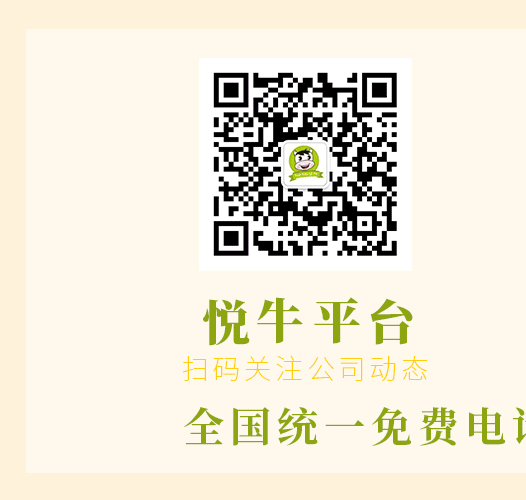It is well known that the human body is home to numerous acupuncture points. These points not only serve as connections for the flow of energy within the body but also play a crucial role in disease prevention.
Many ailments can be treated through massage and stimulation of these acupuncture points, as exemplified by the practice of acupuncture in Traditional Chinese Medicine (TCM).
The functions of acupuncture points vary significantly depending on their location on the body. So, what are the specific distributions of these acupuncture points and their corresponding functions?
01Acupuncture Points on the Front of the Head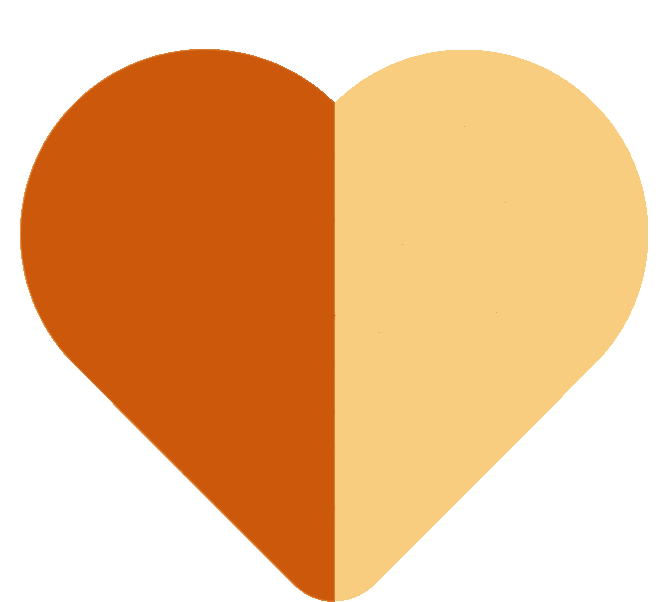 1. Yin Tang (Hall of Impression)
1. Yin Tang (Hall of Impression)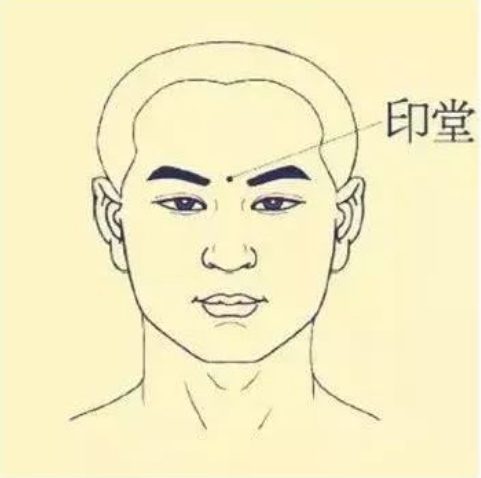
Location: At the midpoint between the two eyebrows.
Indications: Enhances brain function, calms the mind, and opens the eyes. It is suitable for treating frontal headaches, dizziness, eye diseases, colds, mental fatigue, insomnia, rhinitis, and hypertension.
Sensation: Pressing this point produces a feeling of soreness and distension.
 2. Ying Xiang (Welcome Fragrance)
2. Ying Xiang (Welcome Fragrance)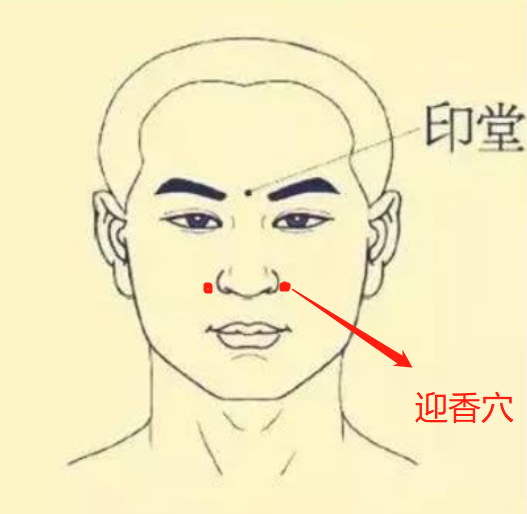
Location: 5 fen (approximately 1.5 cm) lateral to the outer wing of the nose, within the nasolabial groove.
Indications: Clears heat and dispels wind, opens the nasal passages, and prevents colds. It is suitable for colds, rhinitis, nasal congestion, loss of smell, and facial paralysis.
Sensation: Local pressure produces a feeling of fullness. If the nose is unable to smell, pressing this point can create a “ventilation” sensation.
 3. Shui Gou (Ren Zhong)
3. Shui Gou (Ren Zhong)
Location: At the junction of the upper third and lower two-thirds of the philtrum.
Indications: Commonly used for treating pediatric convulsions, heat stroke, stroke, facial nerve paralysis, and acute lumbar sprains.
 4. Jing Ming (Bright Eyes)
4. Jing Ming (Bright Eyes)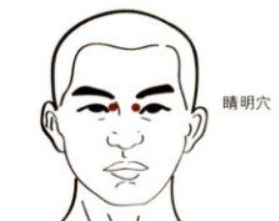
Location: 0.1 cun above the inner canthus of the eye.
Indications: Commonly used for the treatment and care of eye diseases.
 5. Zan Zhu (Gathering Bamboo)
5. Zan Zhu (Gathering Bamboo)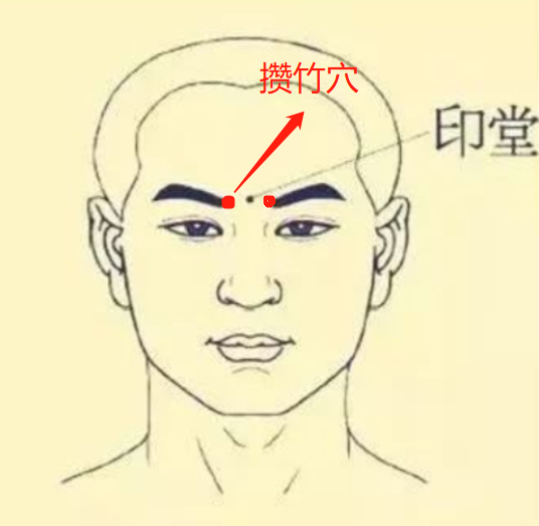
Location: At the brow, at the location of the supraorbital notch.
Indications: Commonly used for treating headaches, dizziness, pain in the brow bone, red and swollen eyes, blurred vision, tearing, facial paralysis, etc.
02Acupuncture Points on the Back of the Head 1. Bai Hui (Hundred Meetings)
1. Bai Hui (Hundred Meetings)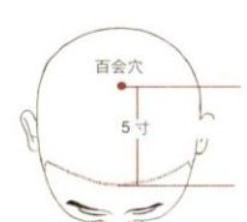
Location: At the top of the head, at the intersection of the midline of the head and the line extending from the tips of the ears.
Indications: Raises Yang, stabilizes the body, invigorates Yang Qi, clears heat, opens the orifices, and benefits the brain. Suitable for forgetfulness, insomnia, mental fatigue, dizziness, tinnitus, prolapse of internal organs, headaches, hypertension, stroke, chronic diarrhea, etc. It is the gathering point of Yang Qi in the body.
Sensation: Local pressure produces a slight distension sensation.
 2. Feng Chi (Wind Pool)
2. Feng Chi (Wind Pool)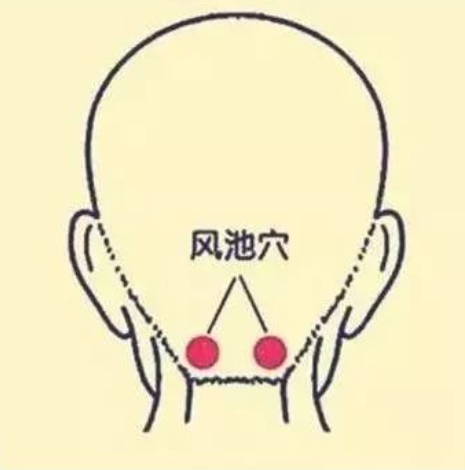
Location: Below the occipital bone, level with the lower edge of the mastoid process, in the depression lateral to the sternocleidomastoid muscle.
Indications: Dispels wind, resolves exterior conditions, clears the head, brightens the eyes, and opens the brain. Suitable for neck stiffness, headaches, dizziness, insomnia, forgetfulness, hypertension, rheumatism, etc. It is also effective for fever with chills, heat diseases with no sweating, red and painful eyes, nasal congestion, epistaxis, deafness, tinnitus, toothache, stroke, coma, and facial paralysis.
Sensation: Local pressure produces a feeling of soreness and slight pain.
 3. Wan Gu (Complete Bone)
3. Wan Gu (Complete Bone)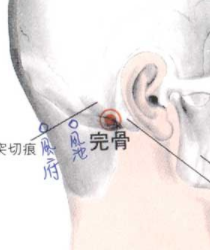
Location: In the depression below the mastoid process, level with Feng Fu point.
Indications: Commonly used for headaches, neck stiffness, facial paralysis, toothache, and swelling and pain in the cheeks.
03Acupuncture Points on the Neck and Head 1. Tai Yang (Sun)
1. Tai Yang (Sun) 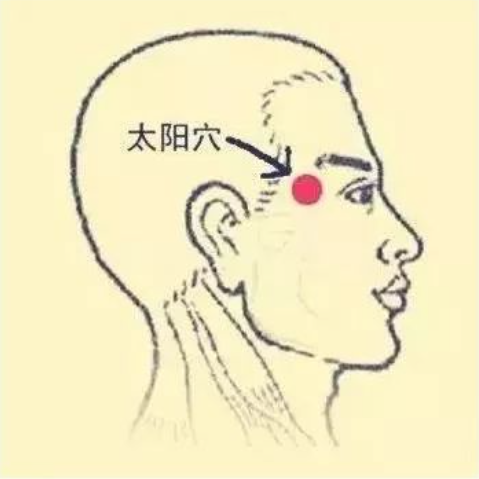
Location: Between the tail of the eyebrow and the outer corner of the eye, 1 cun posterior.
Indications: Awakens the mind, brightens the eyes, dispels wind, and alleviates pain. Suitable for headaches, dizziness, migraines, neurasthenia, colds, blurred vision, and facial paralysis.
Sensation: Local pressure produces a feeling of soreness and distension, and deeper pressure can be painful, sometimes radiating outward.
 2. Xia Guan (Lower Gate)
2. Xia Guan (Lower Gate)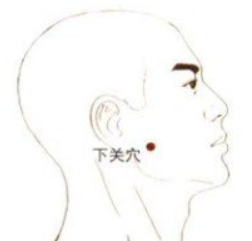
Location: In the depression between the lower edge of the zygomatic arch and the mandible, with the mouth closed.
Indications: For jaw joint arthritis, facial numbness, facial paralysis, upper toothache, tinnitus, and deafness.
 3. Jia Che (Cheek Car)
3. Jia Che (Cheek Car)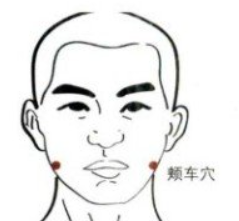
Location: About one finger breadth anterior to the angle of the mandible, at the point of the masseter muscle when biting down.
Indications: Suitable for lower toothache, jaw clenching, parotitis, and facial paralysis.
 4. Yi Feng (Wind Screen)
4. Yi Feng (Wind Screen)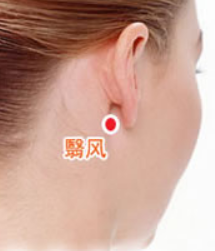
Location: In the depression anterior to the mastoid process, level with the lower edge of the earlobe.
Indications: Commonly used for deafness, tinnitus, toothache, temporomandibular joint disease, and facial nerve paralysis.
 5. Er Men (Ear Gate)
5. Er Men (Ear Gate)
Location: In front of the notch of the ear, in the depression behind the condyle of the mandible.
Indications: Treatment and care of ear diseases.
04Acupuncture Points on the Abdomen and Chest 1. Dan Zhong (Chest Center)
1. Dan Zhong (Chest Center)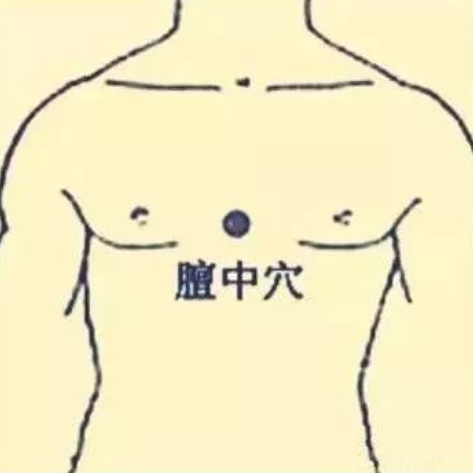
Location: On the anterior midline of the chest, between the two nipples, at the level of the fourth intercostal space.
Indications: Expands the chest, regulates Qi, descends lung Qi, and calms the mind. Suitable for emotional distress, chest tightness, palpitations, shortness of breath, insomnia with vivid dreams, hiccups, and asthma.
Sensation: Local pressure produces a slight distension sensation.
 2. Zhong Wan (Middle Stomach)
2. Zhong Wan (Middle Stomach)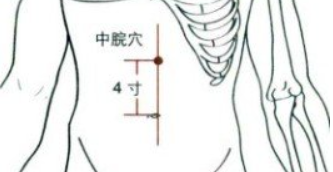
Location: On the anterior midline of the abdomen, 4 cun above the navel.
Indications: Regulates the spleen and stomach, strengthens the spleen, transforms dampness, harmonizes the stomach, descends rebellious Qi, and calms the mind. Suitable for gastrointestinal dysfunction, stomach pain, gastritis, constipation, diarrhea, vomiting, borborygmi, and palpitations with insomnia. It is one of the important acupuncture points for treating spleen and stomach diseases in TCM.
Sensation: Local pressure produces a feeling of distension and numbness.
 3. Tian Shu (Heavenly Pivot)
3. Tian Shu (Heavenly Pivot)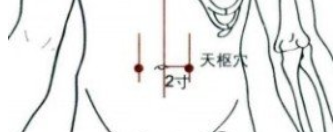
Location: 2 cun lateral to the navel.
Indications: Regulates the spleen and stomach, harmonizes Qi, and is suitable for gastrointestinal dysfunction, borborygmi, diarrhea, abdominal pain, abdominal distension, constipation, enteritis, edema, and menstrual irregularities. It also has a certain effect on weight loss.
Sensation: Local pressure produces a feeling of heaviness and distension, sometimes radiating downward.
 4. Qi Hai (Sea of Qi)
4. Qi Hai (Sea of Qi)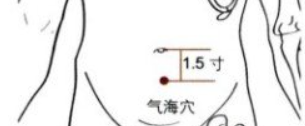
Location: On the anterior midline of the abdomen, 1.5 cun below the navel.
Indications: Raises Yang, tonifies Qi, and benefits the kidneys. Suitable for Qi deficiency, fatigue, abdominal distension, borborygmi, menstrual irregularities, impotence, and nocturnal emissions. It is a key point for tonifying Qi and has strengthening and health-promoting effects.
Sensation: Local pressure produces a feeling of heaviness and distension radiating to the lower abdomen.
 5. Guan Yuan (Gate of Origin)
5. Guan Yuan (Gate of Origin)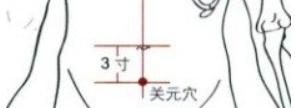
Location: On the anterior midline of the abdomen, 3 cun below the navel. It is located on the midline of the lower abdomen, 4 fingerbreadths below the navel.
Indications: Warms the kidneys, reduces Yang, restores Yang, and tonifies Yuan Qi. Suitable for deficiency syndromes, fatigue, insufficient Yuan Qi, low sexual function, diarrhea, borborygmi, nocturnal emissions, impotence, frequent urination, menstrual irregularities, dysmenorrhea, leukorrhea, infertility, and recovery from chronic diseases. It has a strengthening effect.
05Acupuncture Points on the Back 1. Ba Liao (Eight Crevices)
1. Ba Liao (Eight Crevices)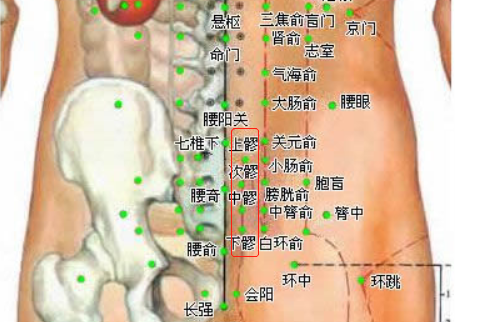
Location: On the sacrum. Also known as the upper crevice, lower crevice, middle crevice, and lower crevice, there are a total of eight points located in the first, second, third, and fourth sacral foramina, collectively referred to as the “Eight Points.”
Indications: Diseases of the lumbar and sacral regions, lower back pain, sciatica, lower limb weakness, urinary difficulties, menstrual irregularities, abdominal distension, and pelvic inflammatory disease.
Sensation: Local pressure produces a feeling of soreness and distension, and rubbing can cause local warmth radiating to the lower abdomen.
 2. Feng Men (Wind Gate)
2. Feng Men (Wind Gate)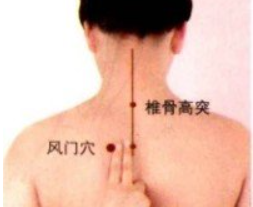
Location: 1.5 cun lateral to the spinous process of the second thoracic vertebra.
Indications: Commonly used for treating colds, coughs, fever, headaches, neck stiffness, and back pain.
 3. Gao Huang (High Yang)
3. Gao Huang (High Yang)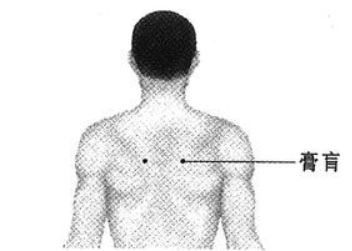
Location: 3 cun lateral to the spinous process of the fourth thoracic vertebra, at the medial border of the scapula, with the elbow flexed.
Indications: Commonly used for cough, shortness of breath, forgetfulness, nocturnal emissions, impotence, night sweats, and various deficiency syndromes.
 4. Zhi Yang (Ultimate Yang)
4. Zhi Yang (Ultimate Yang)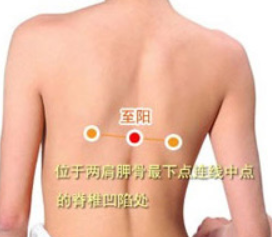
Location: On the back, at the midline, in the depression below the spinous process of the seventh thoracic vertebra.
Indications: Chest and rib distension, abdominal pain with jaundice, cough, shortness of breath, back pain, stiffness of the spine, and fever.
 5. Ling Tai (Spirit Platform)
5. Ling Tai (Spirit Platform)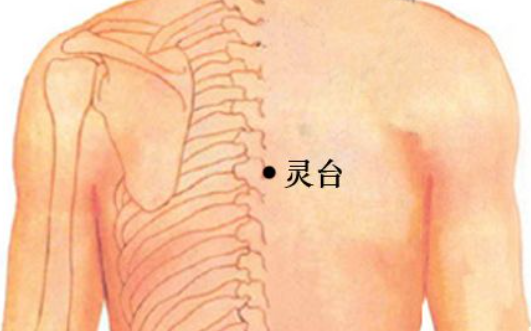
Location: On the back, at the midline, in the depression below the spinous process of the sixth thoracic vertebra.
Indications: Cough, shortness of breath, neck stiffness, back pain, fever, and carbuncles.
 6. Shen Yu (Kidney Shu)
6. Shen Yu (Kidney Shu)
Location: 1.5 cun lateral to the spinous process of the second lumbar vertebra.
Indications: Nourishes the brain marrow, strengthens the lumbar and kidneys, stops cough, and calms wheezing. Suitable for kidney deficiency, lumbar pain, weakness in the lower back and knees, tinnitus, dizziness, forgetfulness, insomnia, impotence, nocturnal emissions, menstrual irregularities, neurasthenia, male infertility, female infertility, pulmonary heart disease with wheezing, kidney not receiving Qi, developmental disorders in children, and various deficiency syndromes. It has a general strengthening effect and is effective for kidney deficiency and nephritis.
Sensation: Local pressure produces a feeling of soreness and pain; do not apply excessive force, and the duration can be slightly longer.
06Acupuncture Points on the Back 1. Fei Shu (Lung Shu)
1. Fei Shu (Lung Shu)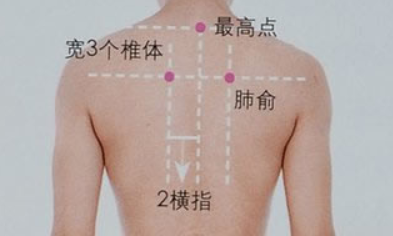
Location: 1.5 cun lateral to the spinous process of the third thoracic vertebra.
Indications: Opens the lungs, regulates Qi, and calms wheezing and cough. Suitable for cough, shortness of breath, colds, exterior wind-cold, night sweats, and back pain. It has a certain effect on various lung diseases.
Sensation: Local pressure produces a feeling of soreness and distension.
 2. Xin Shu (Heart Shu)
2. Xin Shu (Heart Shu)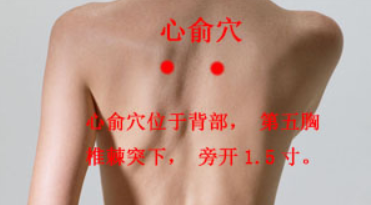
Location: 1.5 cun lateral to the spinous process of the fifth thoracic vertebra.
Indications: Regulates Qi and blood, opens the heart vessels, and calms the mind. Suitable for palpitations, coronary heart disease, angina pectoris, neurasthenia, insomnia, and back pain. It has a certain therapeutic effect on various heart diseases.
Sensation: Local pressure produces a feeling of soreness and distension.
 3. Gan Shu (Liver Shu)
3. Gan Shu (Liver Shu)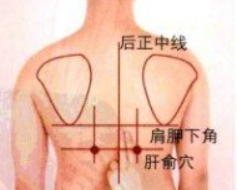
Location: 1.5 cun lateral to the spinous process of the ninth thoracic vertebra.
Indications: Soothes the liver, benefits the gallbladder, expands the chest, harmonizes the stomach, clears the head, and regulates menstruation. Suitable for emotional distress, chest and rib distension, dizziness, irritability, liver Qi stagnation, jaundice, rib pain, and back pain. It has a certain effect on liver and gallbladder diseases.
 4. Pi Shu (Spleen Shu)
4. Pi Shu (Spleen Shu)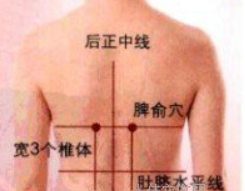
Location: 1.5 cun lateral to the spinous process of the eleventh thoracic vertebra.
Indications: Strengthens the spleen, transforms dampness, and harmonizes the stomach to stop diarrhea. Suitable for stomach pain, indigestion, ulcer disease, diabetes, vomiting, diarrhea, fatigue, and back pain. It has a certain effect on spleen and stomach diseases.
Sensation: Local pressure produces a feeling of soreness and distension.
 5. Shen Shu (Kidney Shu)
5. Shen Shu (Kidney Shu)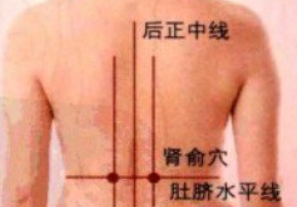
Location: 1.5 cun lateral to the spinous process of the second lumbar vertebra.
Indications: Nourishes the brain marrow, strengthens the lumbar and kidneys, stops cough, and calms wheezing. Suitable for kidney deficiency, lumbar pain, weakness in the lower back and knees, tinnitus, dizziness, forgetfulness, insomnia, impotence, nocturnal emissions, menstrual irregularities, neurasthenia, male infertility, female infertility, pulmonary heart disease with wheezing, kidney not receiving Qi, developmental disorders in children, and various deficiency syndromes. It has a general strengthening effect and is effective for kidney deficiency and nephritis.
Sensation: Local pressure produces a feeling of soreness and pain; do not apply excessive force, and the duration can be slightly longer.
07Acupuncture Points on the Upper Limbs 1. Qu Chi (Pool at the Bend)
1. Qu Chi (Pool at the Bend)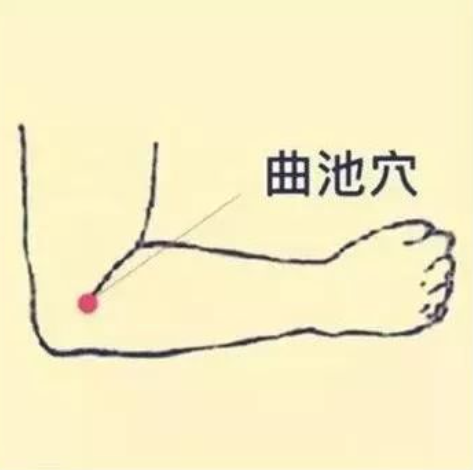
Location: When the elbow is flexed at 90°, it is located at the outer end of the elbow crease.
Indications: Dispels wind, resolves exterior conditions, clears heat, and benefits dampness. Suitable for exterior heat, hypertension, sore throat, upper limb pain, and numbness.
Sensation: Local pressure produces a feeling of soreness and distension, sometimes radiating to the fingertips.
 2. Nei Guan (Inner Pass)
2. Nei Guan (Inner Pass)
Location: 2 cun above the wrist crease, between the tendons of the palmaris longus and the flexor carpi radialis.
Indications: Calms the mind, regulates blood, stops pain, and expands the chest. Suitable for emotional distress, neurasthenia, insomnia, discomfort in the stomach, angina, stomach pain, nausea, vomiting, and motion sickness.
Sensation: Local pressure produces a feeling of soreness and distension, sometimes radiating to the middle finger.
 3. Wai Guan (Outer Pass)
3. Wai Guan (Outer Pass)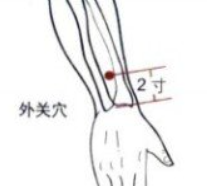
Location: 2 cun above the wrist crease, between the ulna and radius.
Indications: Clears heat, dispels wind, and opens the shoulder and arm. Suitable for pain or numbness on the outer side of the upper limb, hemiplegia, stiff neck, migraine, heat diseases, and tinnitus.
Sensation: Local pressure produces a feeling of soreness and distension, sometimes radiating to the fingers.
 4. He Gu (Union Valley)
4. He Gu (Union Valley)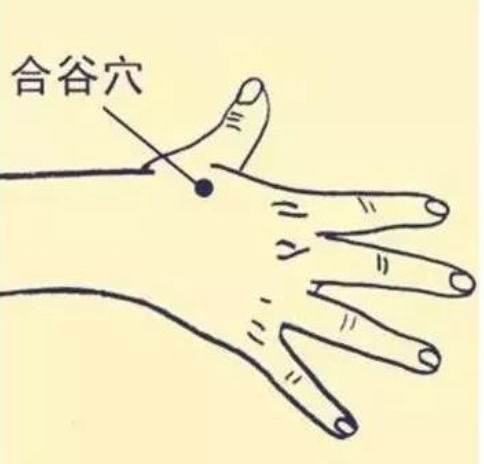
Location: At the midpoint of the first and second metacarpal bones, slightly towards the index finger side.
Indications: Dispels wind, resolves exterior conditions, calms the mind, and opens the orifices. Suitable for dizziness, facial paralysis, sore throat, headache, toothache, tinnitus, fever, neurasthenia, and arm pain. It can also prevent and treat colds.
Sensation: Local pressure produces a feeling of soreness, distension, and pain, sometimes radiating to the upper limb.
08Acupuncture Points on the Lower Limbs 1. Zu San Li (Leg Three Miles)
1. Zu San Li (Leg Three Miles)
Location: 3 cun below the outer knee, at the outer side of the tibia.
Indications: Strengthens the spleen and stomach, supports the body’s defenses, dispels wind and dampness, opens the meridians, and benefits Qi and brain function. Suitable for gastrointestinal dysfunction, chronic illness, stomach pain, indigestion, constipation, diarrhea, vomiting, borborygmi, hypertension, insomnia, and hemiplegia. It is an important acupuncture point for health preservation, longevity, and anti-aging, and it also has certain effects on beauty and weight loss.
Sensation: Local pressure produces a feeling of soreness and distension, sometimes radiating to the lower limbs and dorsum of the foot.
 2. Yang Ling Quan (Yang Mound Spring)
2. Yang Ling Quan (Yang Mound Spring)
Location: Below the outer side of the knee, in the depression below the head of the fibula.
Indications: Clears the liver and gallbladder, relaxes the tendons, and lubricates the joints. Suitable for tinnitus, chest and rib distension, hemiplegia, lower limb pain or numbness, knee arthritis, cholecystitis, bitter taste in the mouth, and vomiting.
Sensation: Local pressure produces a feeling of soreness and slight pain.
 3. Wei Zhong (Middle of the Crook)
3. Wei Zhong (Middle of the Crook)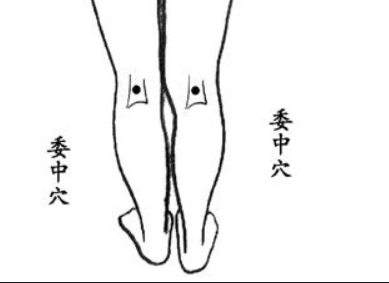
Location: At the center of the popliteal fossa.
Indications: Opens the meridians, dispels wind and dampness, cools the blood, and clears heat. Suitable for lower back pain, difficulty in flexion and extension, neck stiffness, lumbar muscle strain, lower limb paralysis, hemiplegia, knee arthritis, and urinary difficulties.
Sensation: Local pressure produces a feeling of soreness and numbness, sometimes radiating to the lower back.
 4. Cheng Shan (Supporting Mountain)
4. Cheng Shan (Supporting Mountain)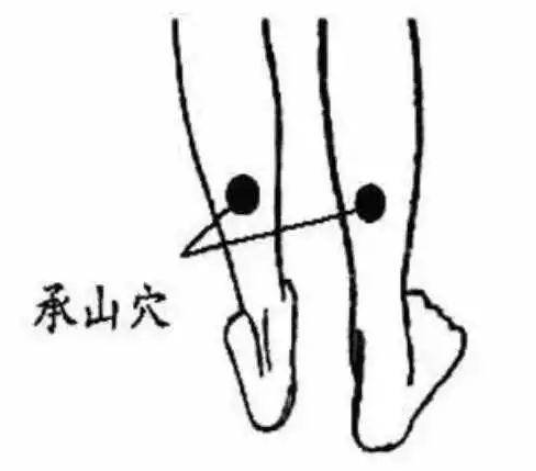
Location: On the midline of the back of the lower leg, 8 cun below Wei Zhong, between the two bellies of the gastrocnemius muscle.
Indications: Relaxes the muscles and alleviates spasms, and benefits the waist and legs. Suitable for back pain, calf cramps, and lower limb weakness.
Sensation: Local pressure may produce a feeling of soreness and slight pain, and kneading can produce a feeling of distension.
 5. San Yin Jiao (Three Yin Intersection)
5. San Yin Jiao (Three Yin Intersection)
Location: 3 cun above the inner ankle, at the posterior border of the tibia.
Indications: Harmonizes Qi and blood, opens the meridians, strengthens the spleen and stomach, aids digestion, regulates menstruation, alleviates pain, calms the mind, and nourishes Yin. Suitable for abdominal distension, borborygmi, menstrual irregularities, uterine bleeding, dysmenorrhea, urinary difficulties, neurasthenia, kidney deficiency, impotence, insomnia, forgetfulness, fatigue, and easy tiredness. It has a certain effect on heart and brain diseases and is a major health-preserving point.
Sensation: Local pressure produces a feeling of soreness and numbness, sometimes radiating to the lower abdomen.
09Acupuncture Points on the Feet 1. Yong Quan (Gushing Spring)
1. Yong Quan (Gushing Spring)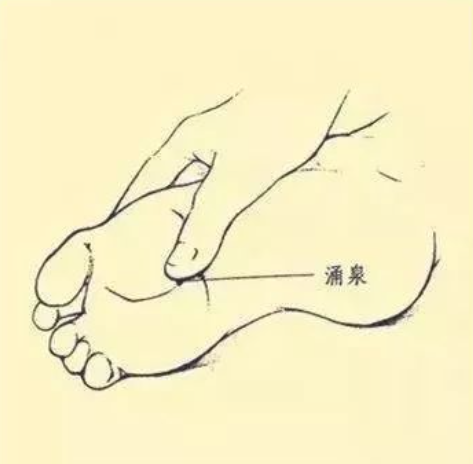
Location: At the junction of the anterior one-third and posterior two-thirds of the foot sole.
Indications: Opens the orifices and awakens the mind. Suitable for dizziness, insomnia, headaches, neck pain, foot heat, stroke, lower limb paralysis, and dry throat.
Sensation: Local pressure produces a significant feeling of distension and pain, sometimes radiating to the lower limbs.
 2. Li Dui (Second Toe)
2. Li Dui (Second Toe)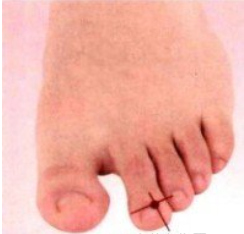
Location: On the outer side of the second toe, 0.1 cun from the corner of the toenail.
Indications: Commonly used for facial swelling, facial paralysis, toothache, epistaxis, yellow nasal discharge, and abdominal distension.
 3. Kun Lun (Kunlun)
3. Kun Lun (Kunlun)
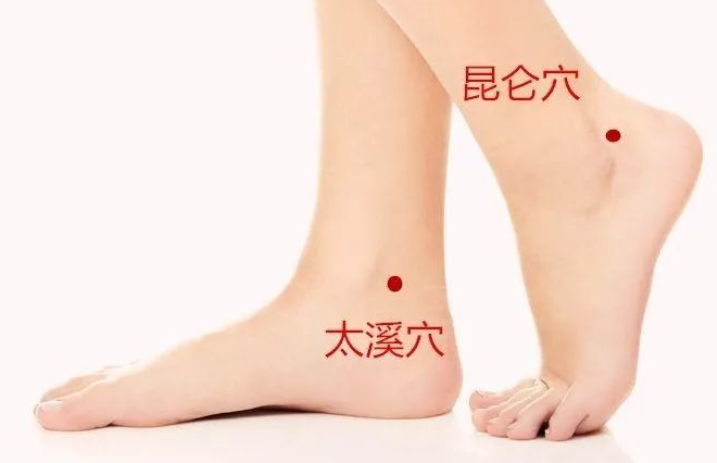
Location: In the depression between the outer ankle and the Achilles tendon, at the highest point of the outer ankle.
Indications: Commonly used for lumbar pain, heel swelling and pain, headaches, neck pain, stiff neck, sciatica, and dizziness.
 4. Shen Mai (Shen Pulse)
4. Shen Mai (Shen Pulse)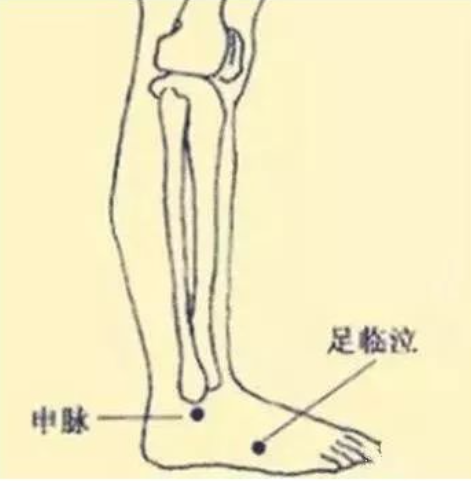
Location: In the depression directly below the outer ankle, as detailed above.
Indications: Commonly used for headaches, insomnia, and lumbar and leg pain.
 5. Tai Xi (Supreme Stream)
5. Tai Xi (Supreme Stream)
Location: In the depression between the highest point of the inner ankle and the Achilles tendon.
Indications: Commonly used for menstrual irregularities, nocturnal emissions, urinary difficulties, sore throat, toothache, tinnitus, deafness, insomnia, cough, shortness of breath, lumbar pain, and heel pain.
This article is sourced from the internet and aims to share information for easier access. If there is any infringement, please contact us for immediate deletion. It is intended for sharing and learning purposes only and does not serve as medical guidance.